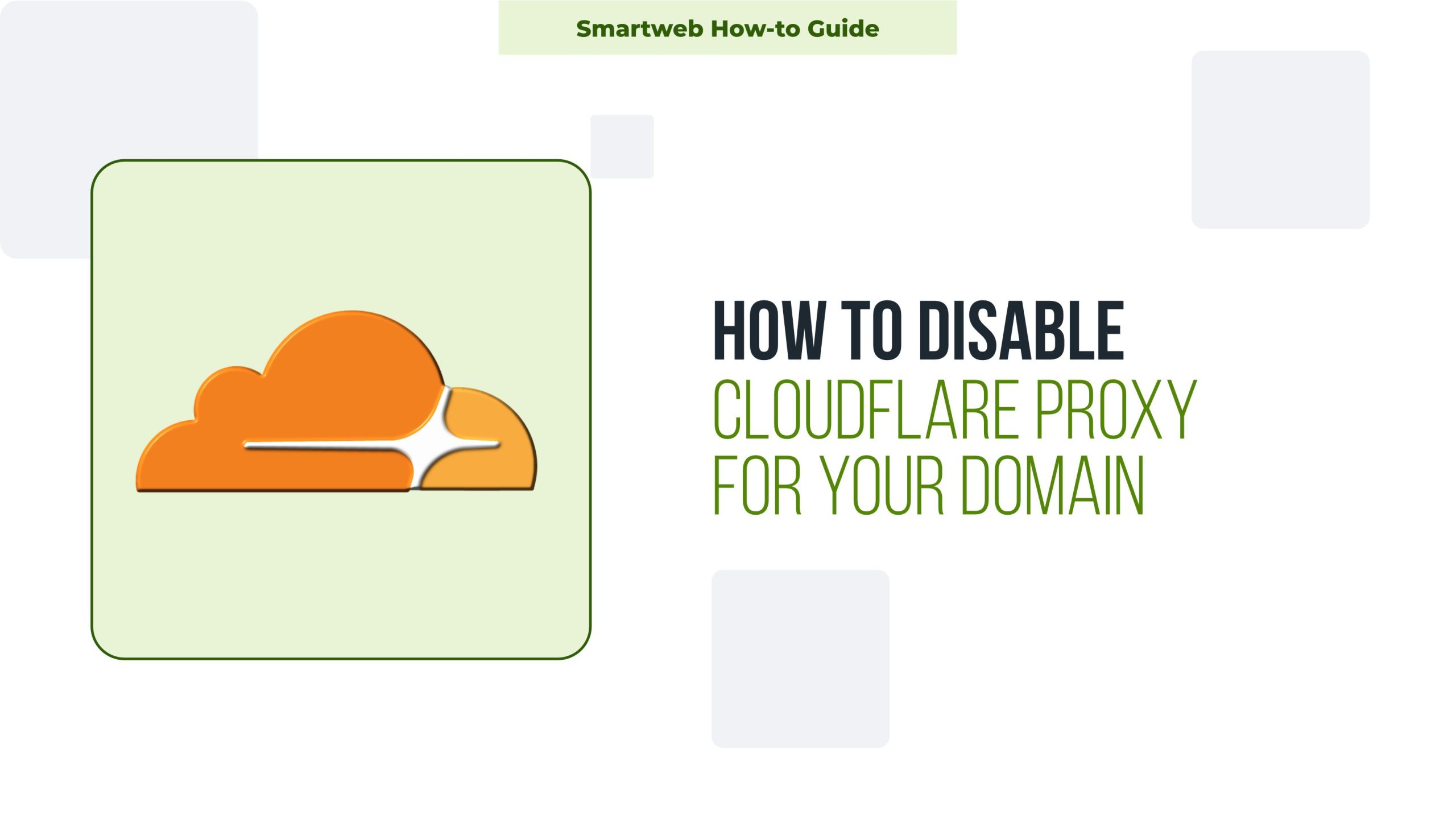
Disabling the Cloudflare proxy for your domain can be helpful if you need to troubleshoot issues, avoid caching, or disable Cloudflare’s security and optimization features temporarily. When the Cloudflare proxy is disabled, your domain will no longer pass traffic through Cloudflare’s network, and Cloudflare’s IP address masking, caching, and performance optimizations will be turned off. Instead, requests will go directly to your server.
Here is a step-by-step guide on how to disable the Cloudflare proxy for your domain.
Steps to Disable the Cloudflare Proxy for Your Domain
1. Log in to Cloudflare
Go to the Cloudflare website and log in with your account credentials.
Once logged in, you will be directed to the dashboard where you can view all the domains under your account.
2. Select the Domain
In the Cloudflare dashboard, locate and select the domain for which you want to disable the proxy.
Click on the domain to access its settings page.
3. Go to the DNS Settings
In the left-hand menu, click on DNS to access the DNS management section.
In the DNS settings, you’ll see a list of all DNS records for your domain (e.g., A, AAAA, CNAME, MX, TXT records).
4. Disable the Proxy for Specific DNS Records
To disable the Cloudflare proxy, you need to turn off the proxy status for each record you don’t want going through Cloudflare’s network.
Find the specific DNS records for which you want to disable the proxy (typically A or CNAME records for your main domain and subdomains).
Look for the Proxy Status column, which has a cloud icon next to each record.
A gray cloud means that the Cloudflare proxy is already disabled.
An orange cloud means that the proxy is active, and Cloudflare is providing caching, security, and other services.
Click the orange cloud icon to turn it gray and disable the proxy for that record.
Note: You can selectively disable the proxy for specific records while keeping it enabled for others, depending on your needs.
5. Save Changes
Cloudflare automatically saves DNS changes as soon as you toggle the proxy status. No additional steps are required to save your changes.
What Happens After Disabling the Cloudflare Proxy?
When you disable the Cloudflare proxy, several things occur:
Direct IP Exposure:
Disabling the proxy allows users to see your server’s IP address rather than Cloudflare’s IP. This makes your server directly accessible, bypassing Cloudflare’s security layer.
No Cloudflare Security & Optimization:
You will lose the security, caching, DDoS protection, and optimization features that Cloudflare provides. Be sure your server is prepared to handle traffic directly.
DNS Propagation Delay:
DNS changes typically take effect within minutes, but they may take up to 24-48 hours to propagate fully across the internet. During this time, some users may still reach the Cloudflare-proxied IP address.
How to Verify the Proxy is Disabled
After disabling the proxy, you can verify that the Cloudflare proxy is indeed turned off:
Check DNS Records with a DNS Lookup Tool:
Use a DNS lookup tool like DNS Checker or WhatsMyDNS to verify the A and CNAME records for your domain.
If the proxy is disabled, the DNS records should display your server’s IP address instead of Cloudflare’s IP.
Run a Ping Test:
Open a command prompt (Windows) or terminal (macOS/Linux) and ping your domain using:
The IP address returned should match your server’s IP, not Cloudflare’s.
Inspect HTTP Headers:
Use a tool like Curl or the network tools in your browser’s developer console to inspect HTTP headers.
Without Cloudflare proxy, you won’t see headers like cf-cache-status or server: cloudflare.
Re-enabling the Cloudflare Proxy
If you wish to turn the Cloudflare proxy back on:
Return to the DNS settings for your domain in Cloudflare.
Click on the gray cloud icon next to the records you disabled to turn them orange, re-enabling Cloudflare’s proxy services.
When Should You Disable the Cloudflare Proxy?
Disabling the Cloudflare proxy may be necessary in several scenarios, such as:
Testing or Troubleshooting:
To rule out Cloudflare as the source of an issue, like connection errors, SSL problems, or caching issues.
Direct Server Access:
When you need your domain to point directly to your server’s IP, such as for specialized development or custom SSL configurations.
Disabling Specific Cloudflare Features:
For example, to avoid caching dynamic content during updates. Cloudflare’s development mode offers a temporary solution for this, but disabling the proxy ensures no caching.
Disabling the Cloudflare proxy for your domain allows users to connect directly to your server, bypassing Cloudflare’s security, performance, and caching features. To disable the proxy:
Access the DNS settings in Cloudflare.
Toggle the orange cloud icon to gray for each DNS record you wish to disable.
Verify the change with DNS lookups and HTTP header inspection.
Turning off the proxy can be a useful tool for troubleshooting and development, but remember to re-enable it when you’re ready to benefit from Cloudflare’s protections and optimizations again.
